Midge Ure needs no introduction as one of the UK’s most highly regarded songwriters and musicians.
Best known for his involvement in ULTRAVOX’s ‘Vienna’, voted “the UK’s favourite No2 of all time” in a BBC Radio2 poll in 2013, the diminutive Glaswegian first found fame as the front man of SLIK. Their single ‘Forever & Ever’ became a UK No1 in 1975 and turned Ure briefly into a teen idol while the band had their own comic strip in Look-In magazine.
Luckily, SLIK could play their instruments and write their own material so in 1977 under the name PVC2, they released ‘Put You In The Picture’ on Zoom Records, a punkish single that sold more than anything by SIMPLE MINDS during their tenure on the label.
Having become fascinated by KRAFTWERK when they hit the UK charts with ‘Autobahn’ in 1975, he purchased his first synth, a Yamaha CS50 in 1977. So when Ure joined RICH KIDS and met drummer Rusty Egan, it was to change the course of his career when he subsequently founded VISAGE and joined ULTRAVOX.
VISAGE had been started in 1978 by Ure and Egan as a project to make up for the shortage of suitable European styled electronic dance music to play at The Blitz Club where the latter was the resident DJ. Needing a front man, they turned its doorman Steve Strange to act as Pied Piper to the colourful clientele who were later to be dubbed the New Romantics. Ure would subsequently help to deliver the movement’s signature song ‘Fade To Grey’.
Others involved in VISAGE included MAGAZINE’s John McGeoch, Dave Formula and Barry Adamson but also crucially Billy Currie, taking a break to heal his wounds from a recently fragmented ULTRAVOX following the departure of leader John Foxx. At the suggestion of Egan, Ure joined the band and the rest is history.
The classic ULTRAVOX line-up of Ure, Billy Currie, Chris Cross and Warren Cann had a run of twelve consecutive Top 40 hits singles in the UK before they imploded due to good old fashioned musical and personal differences, in the wake of Ure’s parallel solo career and his charity work with the Band Aid Trust.
But Ure was always been happiest in the studio and during his first ULTRAVOX phase, he also produced tracks for FATAL CHARM, MODERN MAN and MESSENGERS as well as Ronny, Phil Lynott and Peter Godwin, all while working on the second VISAGE album ‘The Anvil’.
The last ten years have been particularly busy for Ure. A regular on the live circuit with his endearingly intimate acoustic gigs featuring career highlights in stripped back form, he also undertook a number of key musical collaborations with European producers. But his most high profile project was the reformation of the classic ULTRAVOX line-up in 2009.
Following the winding down of ULTRAVOX after an arena tour opening for SIMPLE MINDS in late 2013, Ure returned to the acoustic format for two live tours backed by INDIA ELECTRIC CO. But Autumn 2017 sees Ure returning to synthesizers and electric guitars with his BAND ELECTRONICA tour.
He said on his website: “I want to revisit some material that I’ve not really been able to perform with the recent acoustic line-up, so you can expect to hear songs that haven’t been aired for a while as well as the classics and a couple of surprises! I’ve really enjoyed touring with a band and now I want to expand back to a four piece and return to a more electronic based format”
With that in mind, here is a look back at the career of Midge Ure and his great adventure in electronic music via this twenty track Beginner’s Guide, arranged in chronological order and with a restriction of one track per album / project…
RICH KIDS Marching Men (1978)
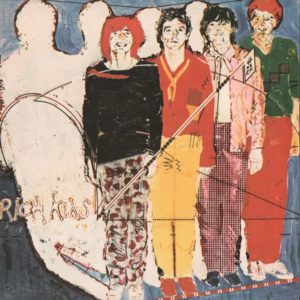 Ousted from THE SEX PISTOLS, Glen Matlock offered Ure a place in his new power-pop combo RICH KIDS. An anti-Fascist anthem produced by the late Mick Ronson, ‘Marching Men’ was notable for Ure’s first use of his Yamaha CS50 on a recording, much to the dismay of Matlock. The band imploded with Matlock and Steve New thinking guitars were the way to go, while Ure and Rusty Egan felt it was electronics.
Ousted from THE SEX PISTOLS, Glen Matlock offered Ure a place in his new power-pop combo RICH KIDS. An anti-Fascist anthem produced by the late Mick Ronson, ‘Marching Men’ was notable for Ure’s first use of his Yamaha CS50 on a recording, much to the dismay of Matlock. The band imploded with Matlock and Steve New thinking guitars were the way to go, while Ure and Rusty Egan felt it was electronics.
Available on the RICH KIDS album ‘Ghosts Of Princes In Towers’ via EMI Music
VISAGE Tar (1979)
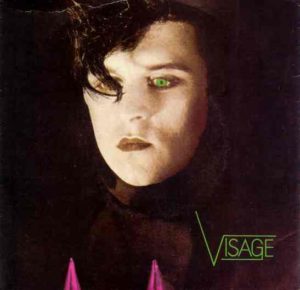 The first VISAGE demo of ‘In The Year 2525’ attracted the attention of producer Martin Rushent who wanted to release the collective’s music via his Genetic imprint through Radar Records. ‘Tar’ was a cautionary tale about smoking dominated by John McGeoch’s sax and Billy Currie’s ARP Odyssey. Alas, Radar Records had funding pulled from its parent company Warners just as the single was released, stalling any potential it had.
The first VISAGE demo of ‘In The Year 2525’ attracted the attention of producer Martin Rushent who wanted to release the collective’s music via his Genetic imprint through Radar Records. ‘Tar’ was a cautionary tale about smoking dominated by John McGeoch’s sax and Billy Currie’s ARP Odyssey. Alas, Radar Records had funding pulled from its parent company Warners just as the single was released, stalling any potential it had.
Available on the VISAGE album ‘Visage’ via Spectrum
ULTRAVOX All Stood Still (1980)
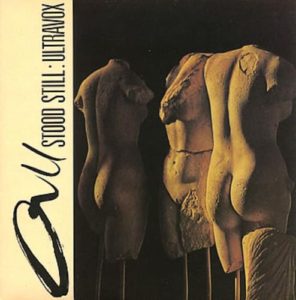 It was testament to Conny Plank’s faith in the band that he continued to work with ULTRAVOX after John Foxx left. On ‘All Stood Still’, Ure put his live experience with THIN LIZZY to good use on this barrage of synth heavy metal about a nuclear holocaust. Driven by Chris Cross’ triggered Minimoog bass and Warren Cann’s powerhouse drums, the interplay between Ure’s guitar and Currie’s ARP Odyssey was awesome.
It was testament to Conny Plank’s faith in the band that he continued to work with ULTRAVOX after John Foxx left. On ‘All Stood Still’, Ure put his live experience with THIN LIZZY to good use on this barrage of synth heavy metal about a nuclear holocaust. Driven by Chris Cross’ triggered Minimoog bass and Warren Cann’s powerhouse drums, the interplay between Ure’s guitar and Currie’s ARP Odyssey was awesome.
Available on the ULTRAVOX album ‘Vienna’ via EMI Music
FATAL CHARM Paris (1981)
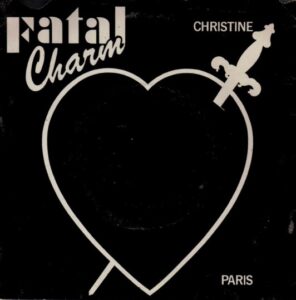 Nottingham combo FATAL CHARM supported ULTRAVOX and OMD in 1980. Their excellent first single ‘Paris’ was produced by Ure and their sound could be seen reflecting the synth flavoured new wave template of the period. Singer Sarah Simmonds’ feisty passion gave a freshly charged sexual ambiguity to the long distance love story written in the days before the Channel Tunnel. Instrumentalist Paul Arnall said: “We were able to use Midge’s Yamaha synth which gave it his sound”.
Nottingham combo FATAL CHARM supported ULTRAVOX and OMD in 1980. Their excellent first single ‘Paris’ was produced by Ure and their sound could be seen reflecting the synth flavoured new wave template of the period. Singer Sarah Simmonds’ feisty passion gave a freshly charged sexual ambiguity to the long distance love story written in the days before the Channel Tunnel. Instrumentalist Paul Arnall said: “We were able to use Midge’s Yamaha synth which gave it his sound”.
Available on the FATAL CHARM album ‘Plastic’ via Fatal Charm
PHIL LYNOTT Yellow Pearl – Remix (1981)
 German music formed a large part of the music at The Blitz Club and even Irish rocker Phil Lynott frequented it. ‘Yellow Pearl’ was a LA DÜSSELDORF inspired co-composition with Ure, while Rusty Egan later played drums on the remix which became the ‘Top Of The Pops’ theme. A VISAGE track in all but name, ‘Yellow Pearl’ was so draped in the involvement of Ure and Egan that it was almost forgotten that this was the frontman of THIN LIZZY!
German music formed a large part of the music at The Blitz Club and even Irish rocker Phil Lynott frequented it. ‘Yellow Pearl’ was a LA DÜSSELDORF inspired co-composition with Ure, while Rusty Egan later played drums on the remix which became the ‘Top Of The Pops’ theme. A VISAGE track in all but name, ‘Yellow Pearl’ was so draped in the involvement of Ure and Egan that it was almost forgotten that this was the frontman of THIN LIZZY!
Available on the THIN LIZZY album ‘Greatest Hits’ via Universal Music
http://www.thinlizzy.org/phil.html
ULTRAVOX The Voice (1981)
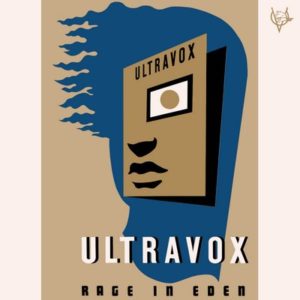 Co-produced by Conny Plank, with the Motorik thrust of NEU! and a marvellous symphonic pomp, ‘The Voice’ highlighted the creative tension that had now emerged between Ure and Chris Cross on one side, and Billy Currie on the other. Characterised by the swimmy Yamaha SS30 string machine, a magnificent ARP Odyssey solo and piano run was the icing on the cake. The song took on a life of its own in a concert setting with an extended closing percussive barrage.
Co-produced by Conny Plank, with the Motorik thrust of NEU! and a marvellous symphonic pomp, ‘The Voice’ highlighted the creative tension that had now emerged between Ure and Chris Cross on one side, and Billy Currie on the other. Characterised by the swimmy Yamaha SS30 string machine, a magnificent ARP Odyssey solo and piano run was the icing on the cake. The song took on a life of its own in a concert setting with an extended closing percussive barrage.
Available on the ULTRAVOX album ‘Rage In Eden’ via EMI Records
https://www.facebook.com/UltravoxUK/
VISAGE The Damned Don’t Cry (1982)
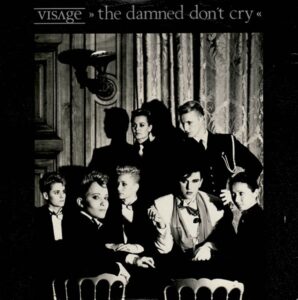 It seemed business as usual with the second album ‘The Anvil’ and its launch single ‘The Damned Don’t Cry’. Very much in the vein of ‘Fade To Grey’, it was full of synthesized European romanticism. But with Steve Strange and Rusty Egan now finding success with their club ventures and ULTRAVOX becoming ever more popular, it was unsurprising that ‘The Anvil’ lacked the focus of its predecessor. Internally, things had gone awry and tensions with Egan led to Ure bidding adieu to VISAGE.
It seemed business as usual with the second album ‘The Anvil’ and its launch single ‘The Damned Don’t Cry’. Very much in the vein of ‘Fade To Grey’, it was full of synthesized European romanticism. But with Steve Strange and Rusty Egan now finding success with their club ventures and ULTRAVOX becoming ever more popular, it was unsurprising that ‘The Anvil’ lacked the focus of its predecessor. Internally, things had gone awry and tensions with Egan led to Ure bidding adieu to VISAGE.
Available on the VISAGE album ‘The Anvil’ via Rubellan Remasters
https://www.facebook.com/therealvisage/
MIDGE URE & CHRIS CROSS Rivets (1982 – released 1984)
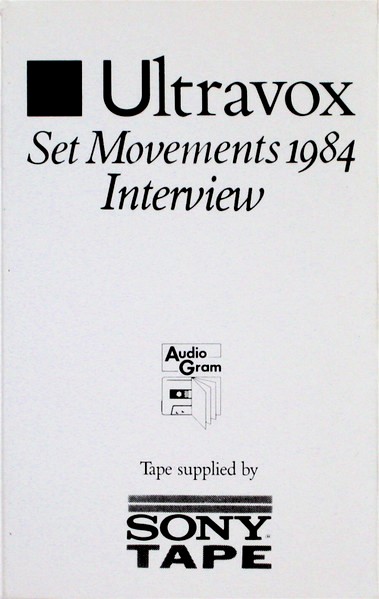 Midge Ure and Chris Cross’ involvement in ‘Rivets’ came about when Levi’s® were about to launch their expensive new TV advertisment… an executive, unhappy with the soundtrack shouted “What we need on there is ‘Vienna’”! The campaign was a successful one and Ure was commissioned to submit music for the next commercial entitled ‘Threads’; however his ’633 Squadron’ inspired electronic tune was subjected to demands for rewrites by the paymasters so tired of the politics, Ure withdrew the track… that piece of music became ‘Love’s Great Adventure’. Levi’s® sponsored ULTRAVOX’s ‘Set Movements’ tour and ‘Rivets’ was part of a cassette that came with the souvenir programme!
Midge Ure and Chris Cross’ involvement in ‘Rivets’ came about when Levi’s® were about to launch their expensive new TV advertisment… an executive, unhappy with the soundtrack shouted “What we need on there is ‘Vienna’”! The campaign was a successful one and Ure was commissioned to submit music for the next commercial entitled ‘Threads’; however his ’633 Squadron’ inspired electronic tune was subjected to demands for rewrites by the paymasters so tired of the politics, Ure withdrew the track… that piece of music became ‘Love’s Great Adventure’. Levi’s® sponsored ULTRAVOX’s ‘Set Movements’ tour and ‘Rivets’ was part of a cassette that came with the souvenir programme!
Originally released on ULTRAVOX ‘Set Movements 1984 Interview’ cassette, currently unavailable
MIDGE URE & MICK KARN After A Fashion (1983)
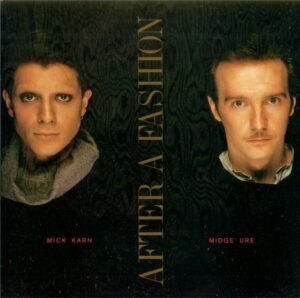 ‘After A Fashion’ was a blistering sonic salvo that crossed the best of JAPAN’s rhythmical art muzak with ULTRAVOX’s ‘The Thin Wall’. However, it stalled at No39 in the UK singles charts and sadly, there was to be no album. But Mick Karn later played on ‘Remembrance Day’ in 1988 and Ure briefly joined JBK, the band formally known as JAPAN sans David Sylvian for an aborted project in 1992. Sadly Karn passed away in 2011 after losing his battle against cancer.
‘After A Fashion’ was a blistering sonic salvo that crossed the best of JAPAN’s rhythmical art muzak with ULTRAVOX’s ‘The Thin Wall’. However, it stalled at No39 in the UK singles charts and sadly, there was to be no album. But Mick Karn later played on ‘Remembrance Day’ in 1988 and Ure briefly joined JBK, the band formally known as JAPAN sans David Sylvian for an aborted project in 1992. Sadly Karn passed away in 2011 after losing his battle against cancer.
Available on the MIDGE URE album ‘No Regrets’ via EMI Gold
MESSENGERS I Turn In (1983)
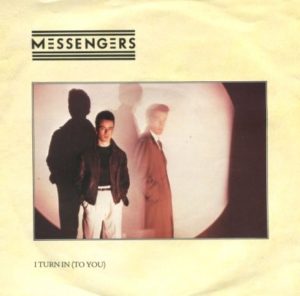 Glaswegian duo MESSENGERS were Danny Mitchell and Colin King whose only album ‘Concrete Scheme’ as MODERN MAN in 1980 was produced by Ure. The pair toured with ULTRAVOX as support during the ‘Quartet’ tour, as well as joining them on stage to augment their live sound. MESSENGERS’ debut single ‘I Turn In (To You)’ was also produced by Ure but criticised for being ULTRAVOX lite, although the song held its own with its dramatic widescreen passages.
Glaswegian duo MESSENGERS were Danny Mitchell and Colin King whose only album ‘Concrete Scheme’ as MODERN MAN in 1980 was produced by Ure. The pair toured with ULTRAVOX as support during the ‘Quartet’ tour, as well as joining them on stage to augment their live sound. MESSENGERS’ debut single ‘I Turn In (To You)’ was also produced by Ure but criticised for being ULTRAVOX lite, although the song held its own with its dramatic widescreen passages.
Originally released as a single via Musicfest, currently unavailable
http://www.discog.info/modern-man-messengers.html
ULTRAVOX Man Of Two Worlds (1984)
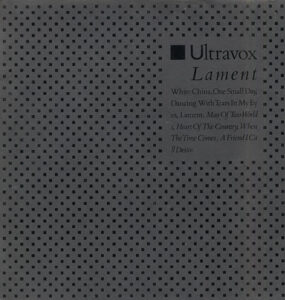 An electro Celtic melodrama in four and a half minutes, the magnificent ‘Man Of Two Worlds’ was the highlight from ULTRAVOX’s self-produced ‘Lament’ long player. Featuring an eerie female Gaelic vocal from Stock Aitken & Waterman backing vocalist Mae McKenna, the doomed romantic novel imagery capturing a feeling of solitude with haunting synths, programmed Motorik rhythms and manual funk syncopation was an unusual template, even for the period.
An electro Celtic melodrama in four and a half minutes, the magnificent ‘Man Of Two Worlds’ was the highlight from ULTRAVOX’s self-produced ‘Lament’ long player. Featuring an eerie female Gaelic vocal from Stock Aitken & Waterman backing vocalist Mae McKenna, the doomed romantic novel imagery capturing a feeling of solitude with haunting synths, programmed Motorik rhythms and manual funk syncopation was an unusual template, even for the period.
Available on the ULTRAVOX album ‘Lament’ via EMI Music
https://twitter.com/UltravoxUK
MIDGE URE If I Was (1985)
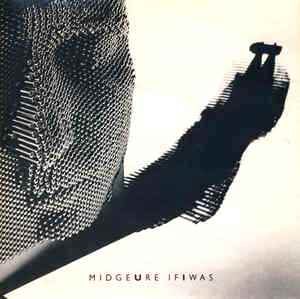 ‘No Regrets’ had been a big solo hit in 1982 so with ULTRAVOX on break, Ure took a busman’s holiday and recorded his first solo album ‘The Gift’. A song demoed by Danny Mitchell of MESSENGERS for their aborted long player, while there was a big anthemic chorus and vibrant string synth interludes, ‘If I Was’ was a very different beast from ULTRAVOX in that this was a love song. Featuring LEVEL 42’s Mark King on bass, it became a UK No1 single.
‘No Regrets’ had been a big solo hit in 1982 so with ULTRAVOX on break, Ure took a busman’s holiday and recorded his first solo album ‘The Gift’. A song demoed by Danny Mitchell of MESSENGERS for their aborted long player, while there was a big anthemic chorus and vibrant string synth interludes, ‘If I Was’ was a very different beast from ULTRAVOX in that this was a love song. Featuring LEVEL 42’s Mark King on bass, it became a UK No1 single.
Available on the MIDGE URE album ‘The Gift’ via EMI Music
MIDGE URE Man Of The World (1993 – released 1996)
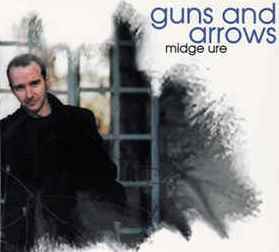 Ure went back to basics with his ‘Out Alone’ tour in 1993 which featured acoustic renditions of his own songs and covers assisted by a pre-programmed keyboard. One song was Peter Green’s ‘Man of the World’, a bittersweet song about a man who has everything he wants, except love. A live recording ended up as a bonus track on the ‘Guns & Arrows’ single, but a studio version appeared on 2008’s ’10’
Ure went back to basics with his ‘Out Alone’ tour in 1993 which featured acoustic renditions of his own songs and covers assisted by a pre-programmed keyboard. One song was Peter Green’s ‘Man of the World’, a bittersweet song about a man who has everything he wants, except love. A live recording ended up as a bonus track on the ‘Guns & Arrows’ single, but a studio version appeared on 2008’s ’10’ covers album.
Live version available on the MIDGE URE double album ‘Pure + Breathe’ via Edsel Records
https://www.facebook.com/midge.ure/
JAM & SPOON Something To Remind Me (2003)
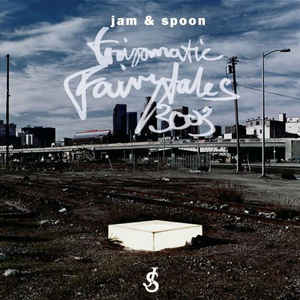 For Jam El Mar and Mark Spoon’s attempt at a ‘pop’ album, the German dance duo featured vocals on all the tracks and among those recruited were Dolores O’Riordan of THE CRANBERRIES and SIMPLE MINDS’ Jim Kerr. For his return to full blown electronica, Midge Ure’s contribution ‘Something To Remind Me’ was big on beats. Recording coincided with the ‘Sampled Looped & Trigger Happy’ tour which saw Ure use a more technologically driven format for live shows.
For Jam El Mar and Mark Spoon’s attempt at a ‘pop’ album, the German dance duo featured vocals on all the tracks and among those recruited were Dolores O’Riordan of THE CRANBERRIES and SIMPLE MINDS’ Jim Kerr. For his return to full blown electronica, Midge Ure’s contribution ‘Something To Remind Me’ was big on beats. Recording coincided with the ‘Sampled Looped & Trigger Happy’ tour which saw Ure use a more technologically driven format for live shows.
Available on the JAM & SPOON album ‘Tripomatic Fairytales 3003’ via Universal Music
https://www.facebook.com/Jam-Spoon-59220848974/
X-PERIENCE Personal Heaven – Desert Dream radio mix (2007)
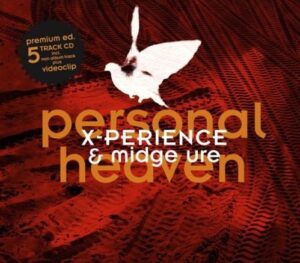 Thanks to his continued popularity in Germany, Ure was much in demand as a guest vocalist and was persuaded to record a song he had written with HEAVEN 17’s Glenn Gregory by dance production team X-PERIENCE. Duetting with Claudia Uhle, who provided her own sumptuous vocals to compliment the electronics and muted synthetic guitars, the punchy Desert Dream radio mix was particularly effective.
Thanks to his continued popularity in Germany, Ure was much in demand as a guest vocalist and was persuaded to record a song he had written with HEAVEN 17’s Glenn Gregory by dance production team X-PERIENCE. Duetting with Claudia Uhle, who provided her own sumptuous vocals to compliment the electronics and muted synthetic guitars, the punchy Desert Dream radio mix was particularly effective.
Available on the CD single ‘Personal Heaven’ via Major Records
SCHILLER Let It Rise (2010)
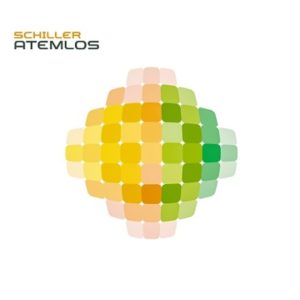 Named after the German poet and dramatist Friedrich Schiller, Christopher von Deylen’s domestically popular ambient electro project recruited Ure to sing on the dramatically widescreen ‘Let It Rise’; he said: “SCHILLER’s got his very own, very good and distinctive style which is much more of a laid back, trip-hop dance thing”. Ure revisited the track for his own ‘Fragile’ album in a more stripped back arrangement.
Named after the German poet and dramatist Friedrich Schiller, Christopher von Deylen’s domestically popular ambient electro project recruited Ure to sing on the dramatically widescreen ‘Let It Rise’; he said: “SCHILLER’s got his very own, very good and distinctive style which is much more of a laid back, trip-hop dance thing”. Ure revisited the track for his own ‘Fragile’ album in a more stripped back arrangement.
Available on the SCHILLER album ‘Atemlos’ via Universal Music
ULTRAVOX Rise (2012)
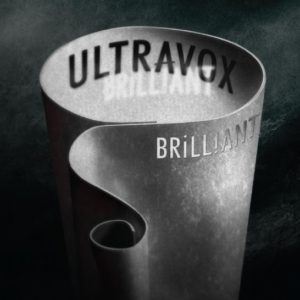 In 2009, the impossible happened and the classic line-up of ULTRAVOX reunited for the ‘Return To Eden’ tour. Things went well enough for a new album to be recorded and writing took place at Ure’s retreat in Canada, Produced by Stephen J Lipson, several of the tracks like ‘Live’ and ‘Satellite’ recalled former glories while with this take on Giorgio Moroder, the percolating sequences and rhythmic snap of ‘Rise’ could be seen a robotic 21st Century update of ‘The Thin Wall’.
In 2009, the impossible happened and the classic line-up of ULTRAVOX reunited for the ‘Return To Eden’ tour. Things went well enough for a new album to be recorded and writing took place at Ure’s retreat in Canada, Produced by Stephen J Lipson, several of the tracks like ‘Live’ and ‘Satellite’ recalled former glories while with this take on Giorgio Moroder, the percolating sequences and rhythmic snap of ‘Rise’ could be seen a robotic 21st Century update of ‘The Thin Wall’.
Available on the ULTRAVOX album ‘Brilliant’ via EMI Music
https://www.instagram.com/ultravoxuk/
LICHTMOND Endless Moments (2014)
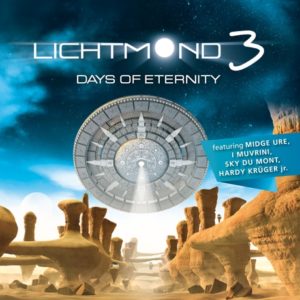 LICHTMOND is an ambitious audio-visual project led by sound architects Giorgio and Martin Koppehele to “Experience Dreamlike Time”. Very progressive in its outlook with “A magic triangle of electronics, ethno and rock songs”, Ure featured on lead vocals and said on the album notes: “For me LICHTMOND is a unique combination of music, visuals and brilliant imagination. All coming together to make one great big piece of art. Enjoy it!”
LICHTMOND is an ambitious audio-visual project led by sound architects Giorgio and Martin Koppehele to “Experience Dreamlike Time”. Very progressive in its outlook with “A magic triangle of electronics, ethno and rock songs”, Ure featured on lead vocals and said on the album notes: “For me LICHTMOND is a unique combination of music, visuals and brilliant imagination. All coming together to make one great big piece of art. Enjoy it!”
Available on the LICHTMOND album ‘Days Of Eternity’ via Blu Phase Media
MIDGE URE Become (2014)
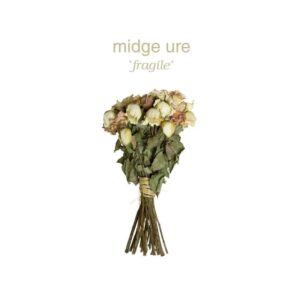 Although Ure had been regularly touring and playing festivals, there was a gap of 14 years between the ‘Move Me’ and ‘Fragile’ long players. The ULTRAVOX reunion was the spark he needed to get his sixth solo album of original material finished. The lead single was ‘Become’, a romantic and less abrasive take on ‘After A Fashion’. With a danceable metronomic beat, it had a classic synthpop sound that Ure admitted he was “kind of harking back to early VISAGE”.
Although Ure had been regularly touring and playing festivals, there was a gap of 14 years between the ‘Move Me’ and ‘Fragile’ long players. The ULTRAVOX reunion was the spark he needed to get his sixth solo album of original material finished. The lead single was ‘Become’, a romantic and less abrasive take on ‘After A Fashion’. With a danceable metronomic beat, it had a classic synthpop sound that Ure admitted he was “kind of harking back to early VISAGE”.
Available on the MIDGE URE album ‘Fragile’ via Hypertension Music
RUSTY EGAN PRESENTS Glorious (2016)
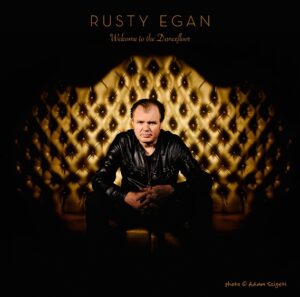 ‘Glorious’ not only reunited our hero with Rusty Egan but also Chris Payne who co-wrote ‘Fade To Grey’; Ure said: “I liked the music, Chris Payne and Rusty had done a great job but I didn’t think the song / melody / lyrics were strong enough… I stripped the demo down to the basic track, edited it down into a more ‘song like’ format and started working on a glorious melody. I added the main melodic synth line and layered guitars over it, ending with the ‘hopefully’ uplifting solo over the outro”.
‘Glorious’ not only reunited our hero with Rusty Egan but also Chris Payne who co-wrote ‘Fade To Grey’; Ure said: “I liked the music, Chris Payne and Rusty had done a great job but I didn’t think the song / melody / lyrics were strong enough… I stripped the demo down to the basic track, edited it down into a more ‘song like’ format and started working on a glorious melody. I added the main melodic synth line and layered guitars over it, ending with the ‘hopefully’ uplifting solo over the outro”.
Available on the RUSTY EGAN PRESENTS album ‘Welcome To The Dance Floor’ via Black Mosaic
Midge Ure’s BAND ELECTRONICA 2017 live dates include:
Frankfurt Batschkapp (Sep 27), Munich Technikum (Sep 28), Cologne Kantine Kulturbetriebe GmbH (Sep 29), Bochum Zeche (Oct 01), Hamburg Gruenspan (Oct 03), Berlin Columbia Theater (Oct 04), Glasgow Royal Concert Hall (Oct 10), Liverpool Philharmonic Hall (Oct 11), Bournemouth Pavillion Theatre (Oct 13), Guildford G Live (Oct 14) , Milton Keynes Theatre (Oct 15), New Theatre Oxford (Oct 17), High Wycombe Swan Theatre (Oct 18), Folkestone Leas Cliff Hall (Oct 19), Skegness The Embassy (Oct 20), Edinburgh Playhouse (Oct 22), Dundee Caird Hall (Oct 23), Gateshead Sage (Oct 24), Manchester Opera House (Oct 25), Dartford Orchard (Oct 27), Basingstoke Anvil (Oct 28), Sheffield City Hall (Oct 29), Halifax Victoria Theatre (Oct 31), Buxton Opera House (Nov 01), Birmingham Town Hall (Nov 02), York Grand Opera House (Nov 03), Southport Theatre (Nov 04), Blackpool Grand Theatre (Nov 05), London Shepherds Bush Empire (Nov 07), Torquay Princess Theatre (Nov 08), Portsmouth Guildhall (Nov 09), Salisbury City Hall (Nov 10), Truro Hall for Cornwall (Nov 11), Nottingham Royal Concert Hall (Nov 14), Eastbourne Devonshire theatre (Nov 15), St Albans Arena (Nov 17)
Further information at http://www.midgeure.co.uk/shows.html
Text by Chi Ming Lai
15th August 2017


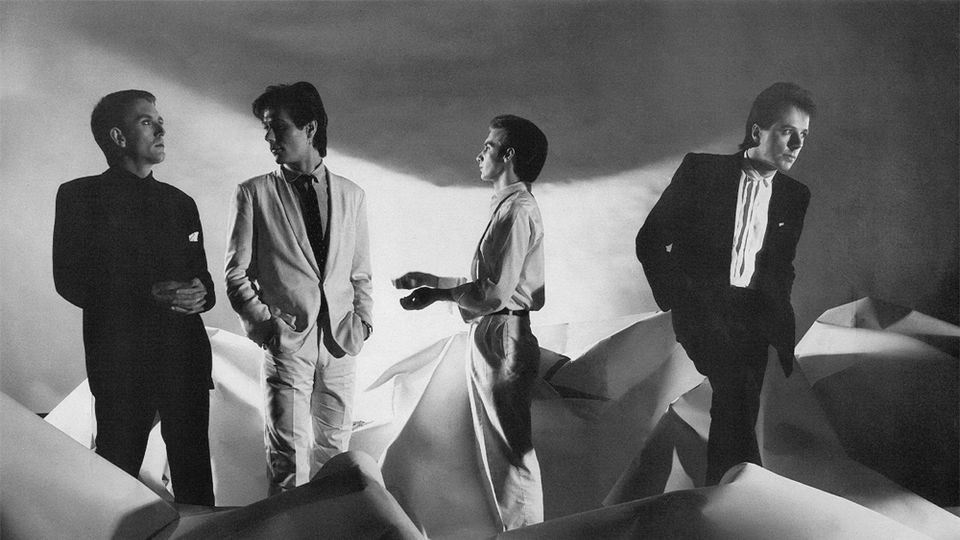
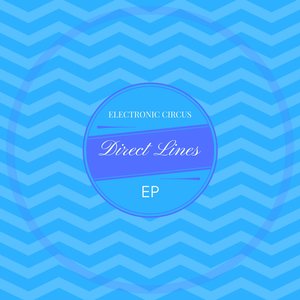
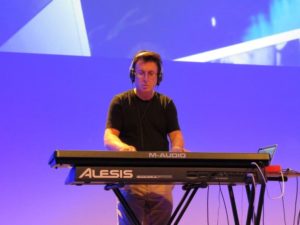 With his adopted home surroundings very much the backbone of the EP, the considerably lighter
With his adopted home surroundings very much the backbone of the EP, the considerably lighter 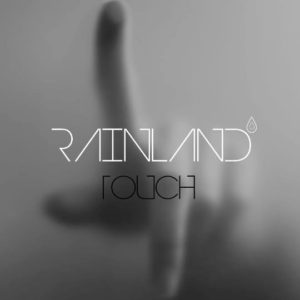
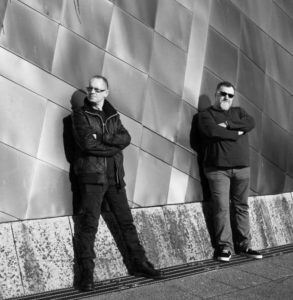
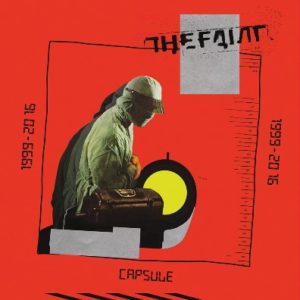
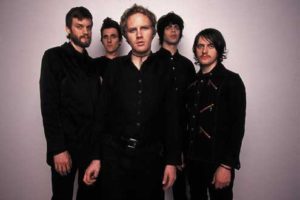 The buzzing string embellished groove of ‘Desperate Guys’ from ‘Wet From Birth’ also deserves its place on this collection, but one glaring omission from this period would be the superb ‘Symptom Finger’, a hypnotic ‘Zoo Station’ styled romp.
The buzzing string embellished groove of ‘Desperate Guys’ from ‘Wet From Birth’ also deserves its place on this collection, but one glaring omission from this period would be the superb ‘Symptom Finger’, a hypnotic ‘Zoo Station’ styled romp.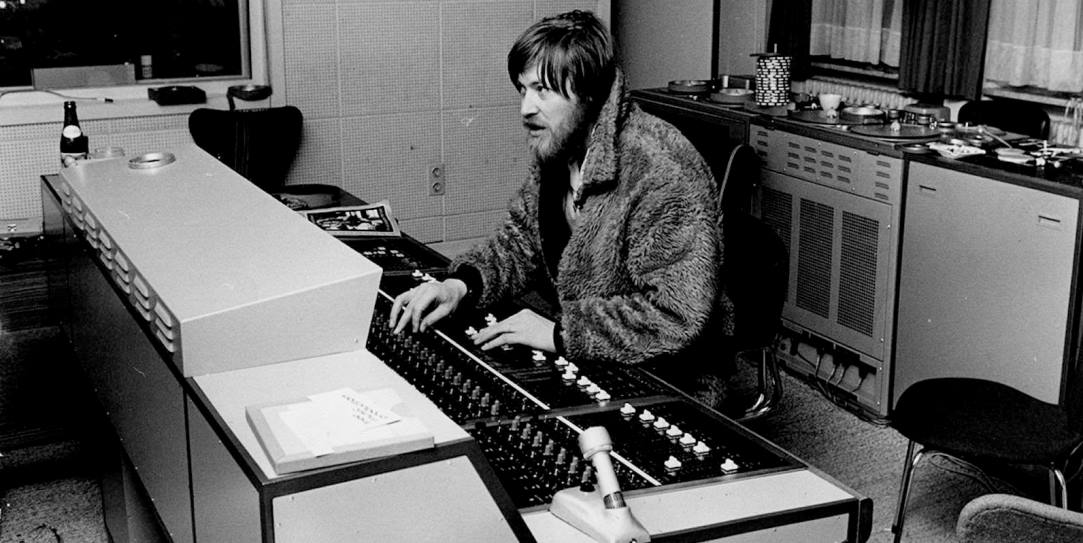
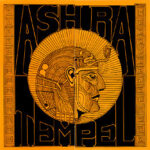
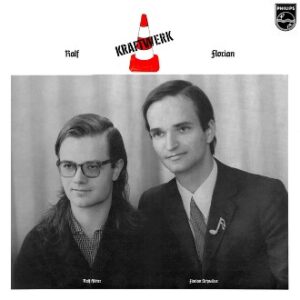

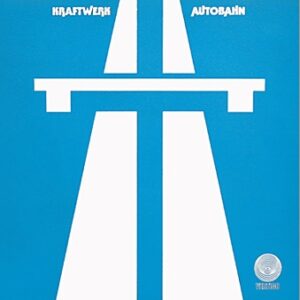
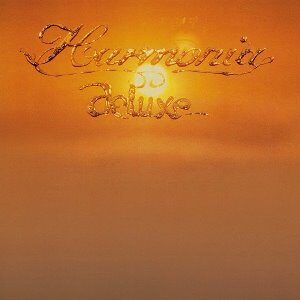
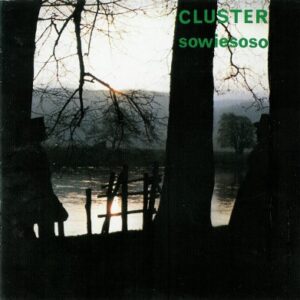
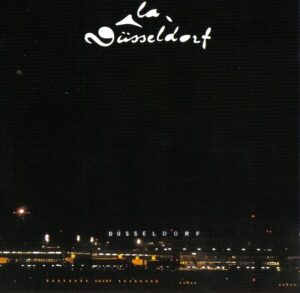

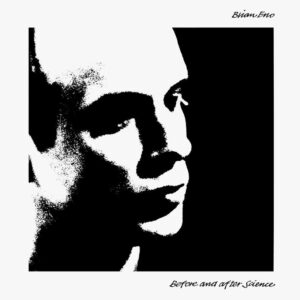
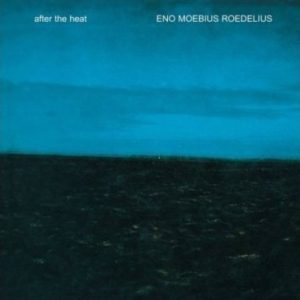
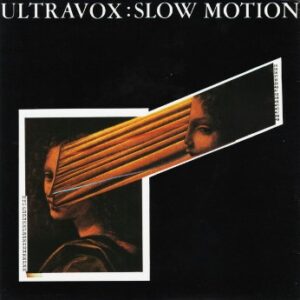
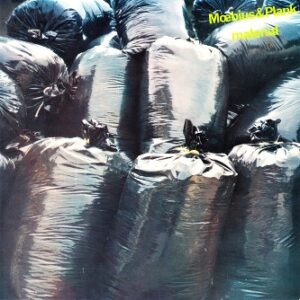
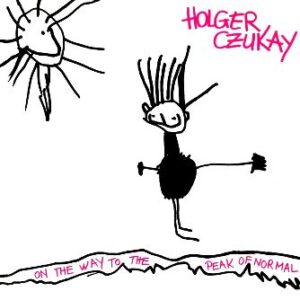
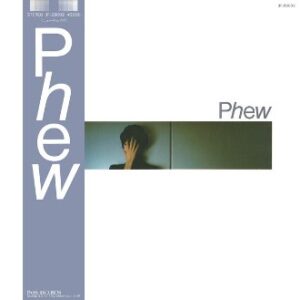
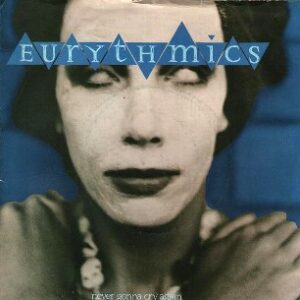
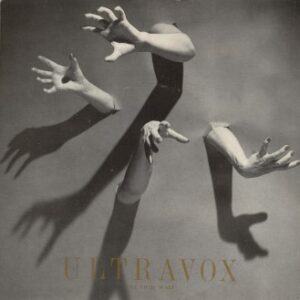
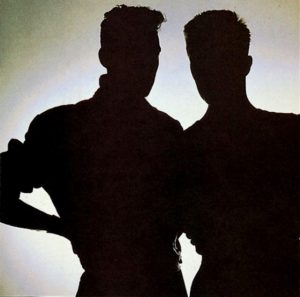
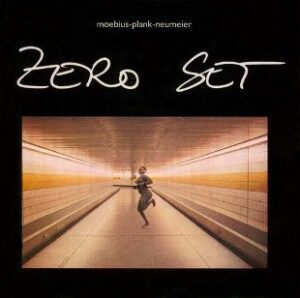

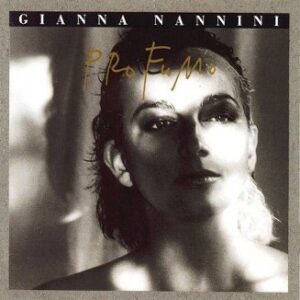
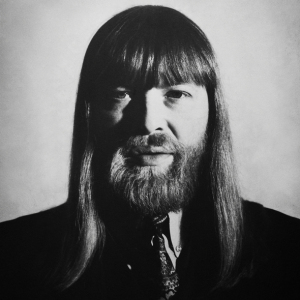
Follow Us!